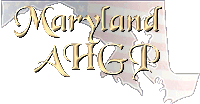|
Welcome
to Maryland American
History and Genealogy Project
we are in the process of
building new State and County pages for the states where
the coordinator has moved on to other projects. Talbot County is looking for a new Coordinator would you
be interested? If so please contact
Webmaster.
Many of the present coordinators are always willing to give help and
suggestions to newcomers, you can learn, I did and that was after 60!!
Read our
About Page and see what our requirements are,
pretty easy!

"Talbot County was formed in 1660-61. The order by which
it was created has not been found, but the Assembly
proceedings first show its existence in this year. The
existing records of the province have not discovered to
us what were its exact limits anterior to the year 1706.
In that year they were definitely settled by the
existing Act of 1706, which enacts that the bounds of
Talbot County shall contain Sharp's Island, Choptank
Island, and all the land on the north side of the Great
Choptank River; and extend itself up the said river to
Tuckahoe Bridge; and from thence with a straight line to
the mill commonly called and known by the name of
Swetnam's Mill, and thence down the south side of Wye
River to its mouth, and thence clown the Bay to the
place of beginning, including Poplar Island and Bruffs
Island.
The second public school in Maryland was established in
Talbot under the Act of 1723. That this school was
something more than a mere elementary school is clear
from the curriculum laid down in the Act, namely,
"Grammar, Good Writing and Mathematics." There is
sufficient evidence for believing that the Talbot Free
School was better supplied with good teachers than the
private subscription schools, which were often filled by
indentured servants, Bampfylde Moore Carew, the "King of
the Beggars," came to Talbot as an unwilling emigrant,
and the captain of the ship that brought him over
recommended him to a planter of Bayside as a "great
scholar and an excellent schoolmaster." The school seems
to have prospered for a long series of years and was
"looked upon as the most frequented in the province."
But after the year 1764 no record of it has been found.
How long it flourished and when it ceased to exist is
unknown. It is believed, upon tradition merely, that it
continued in successful operation up to the outbreak of
the Revolutionary War. Talbot people have long cherished
their public schools as their most valued privilege and
right.
The county has an area of 285 square miles, and derives
its name from Lord Talbot. It is cut up into peninsulas
by the Chesapeake and its tributaries, and is famous for
its landscapes and waterscapes. Agriculture, canning and
oyster-catching are its industries. It has furnished
Governors, United States Senators, a Secretary of the
Treasury and numerous State and national officials and
men of mark. Maryland's first historian came from
Talbot, and it was the home of Robert Morris' father and
the birthplace of John Dickinson. The Delaware and
Chesapeake, and Baltimore, Chesapeake and Atlantic are
its transportation lines. Easton,* the county seat, was
the former "capital" and seat of government on the
Eastern Shore, and the first newspaper on this side of
the Bay was established there more than a century ago.
Oxford and St. Michael's are also historic.
* Population, 3,074.
Online Here or Other Sites
Maryland
AHGP

Source: History of Maryland, by
L. Magruder Passano, Wm. J.C. Dulany Company, 1901.
|



